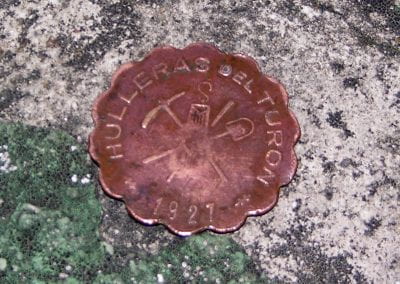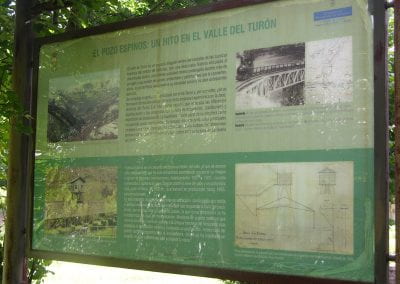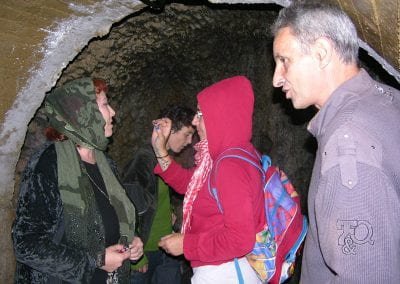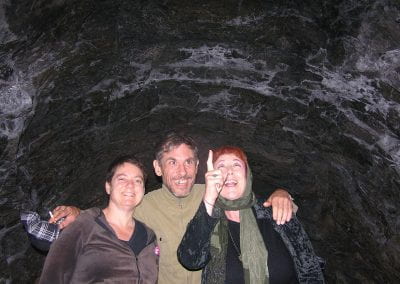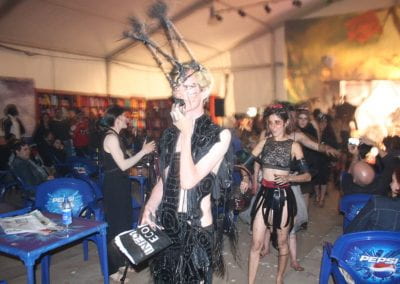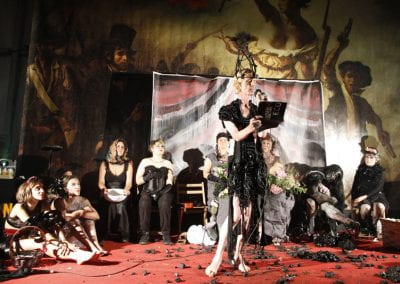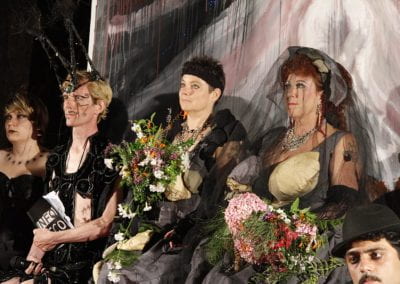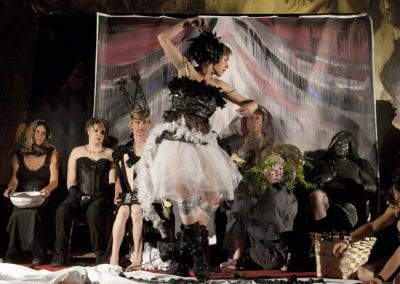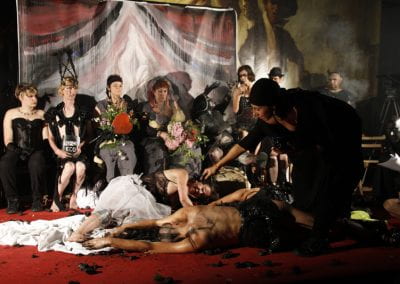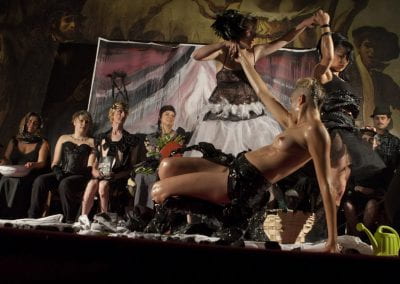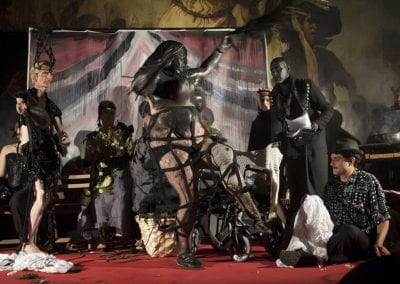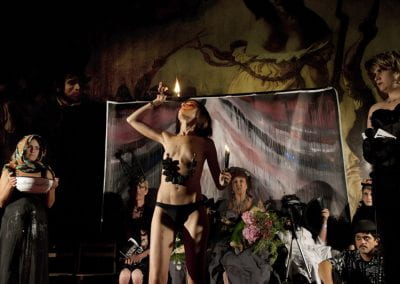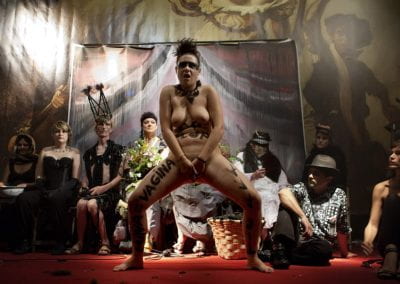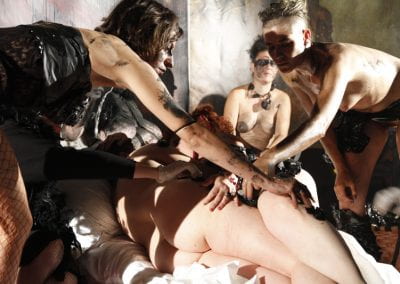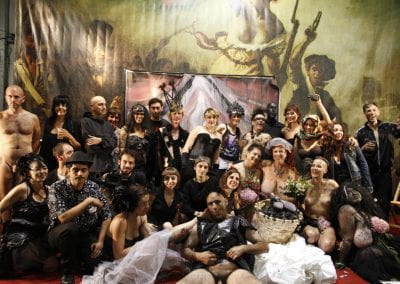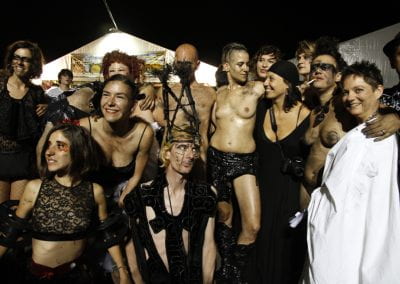In preparation for our Black Wedding to Coal (midnight, on July 23, 2011), which was coincidentally Annie’s birthday. Black Wedding to Coal was produced in collaboration with LABoral Centro de Arte y Creación Industrial (Art and Industrial Creation Center). General Francisco Franco’s fascist regime had originally built the huge complex to be an orphanage and school, but it had been remade into a cutting-edge contemporary art center.
We spent our first several days in Gijón researching the region’s history of coal mining in order to address this history in our wedding. We drove around with Pedro Soler, the head curator at LABoral and our co-producer, Diana. We visited a range of sites from a thriving organic farm to a devastated beach where coal tailings were dumped into the Atlantic Ocean. Between these two extremes we also visited Pozo Fortuna, a small exhibition mining camp, where we were given a tour of the tunnel where mining explosives had been stored. We viewed the Fortuna Well monument, designed by Juan Luis Varela and erected to commemorate the three hundred to four hundred anti-fascists killed in that region during the Franco regime and buried together in the Fortuna Well.
The next day, a retired miner gave us a tour of the Mining Museum in Langreo. This miner handed Beth a piece of scrip, which is a private currency system that coal miners received as pay. The coin was exactly the same kind of company scrip that West Virginia miners were forced to use to purchase necessities at inflated prices from the coal company store. We learned that by the time we were visiting, the Spanish government had shut down the coal mining industry in Asturias. By 2018, it would be shut down in the entire country. This was due to the dominance of cheap international imports and a growing awareness of the environmental problems caused by coal mining.
We were struck by two things. First, that the violent fascist history of Spain was still very present, and second, that the scars left by the coal mining industry were not confined to Appalachia. We returned to our apartment determined to consider these two themes.
Pedro had set up Ecosexuality: Understanding Space through the Body, a workshop with our wedding collaborators from July 20–23, during which we could all work together to prepare for the wedding performance. His talented group of collaborators included dancers, ecologists, healers, performance artists, writers, psycho-magicians, and sex workers—a dynamic mix of punk, porn, and conceptual art. The workshop allowed us to bond as a team, create performances, and make costumes, props, and other Coal-themed accouterments.


